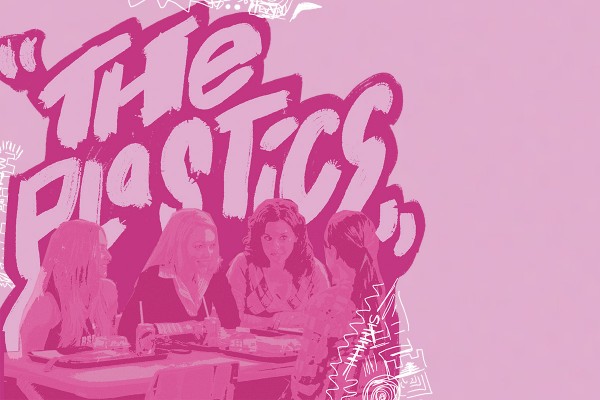White Māori. Fake Māori. Plastic Māori. If you’re Māori, chances are you’ve heard these labels thrown around at some point – whether it’s a poke at your pale skin, your lack of fluency in te reo Māori, or even an aversion to kaimoana. You may have dropped the ‘whitewashed’ line yourself, half-joking, half-bracing for judgement as you step into Māori spaces. But here’s the kicker: these terms aren’t just jokes or casual throwaways; they’re verbal landmines that can obliterate your sense of self.
What really hits home, though, is when a few of these stings come from our own. Out of all the labels, ‘Plastic Māori’ sticks like the cling wrap nobody asked for. It’s the instant go-to term for anyone who doesn’t fit some farcical and outdated standard of what it means to be Māori. Can’t speak te reo? Plastic. Don’t down kina like a champ? Plastic. Don’t look like the stereotypical image of a Māori warrior? Well, guess what: you must be a Plastic. You’re either the perfect embodiment of a ‘real Māori’ or you’re a fraud.
Let’s be real, the label ‘Plastic Māori’ screams of inauthenticity, as if you can distil what it means to be Māori into a checklist. But being Māori isn’t a one-size-fits-all experience; it’s shaped by your whakapapa, where you grew up, and the path you’re walking right now.
Behind The Label
Let’s peel back the glossy veneer of ‘Plastic Māori’. It’s basically a cultural participation trophy in a game where authenticity is judged by how perfectly you fit into some idealised, out-of-touch vision of ‘Māori-ness’. Maybe you grew up without te reo Māori flowing through your home, or you don’t look ‘Māori enough’ (whatever that means). Yet here we are, as though Māori aren’t already running the gauntlet of stereotypes and judgement, “Māori enough” or not.
Picture this: Christmas Day, and your racist uncle is holding court at the table, spouting off about enduring karakia at work meetings and making out-the-gate claims about how many “doll-bludging Māori” would be stuffing their faces with KFC. Casual ignorance like this isn’t just hōhā – it exposes how deeply these stereotypes run (or sit), reducing rich, layered identities into offensive, surface-level cliches. You’re either not Māori enough or just “another bloody Māori.” There’s no winning.
Te ao Māori teaches us of our mana – alive, present, and pulsating through our whenua, whakapapa, and tūpuna. So, what happens when the mana running through our veins is questioned? How can ngāi Māori navigate a world that often sees identity through a narrow colonial lens?
Manufacturing ‘Plastics’
The term ‘Plastic Māori’ doesn’t just exist in a vacuum; like most issues tangata whenua face, it’s tangled up in colonisation. Much like actual plastics are churned out in factories, ‘Plastic Māori’ is an artificial construct that is slapped together from colonial stereotypes and rigid ideas of what Māori “should” be. It’s a prefab identity mould, designed to shrink-wrap Māori into something neat and digestible.
Colonial powers knew what they were doing, too. They imposed rules on Māori identity to weaken the foundations of who we are. Māori identities, however, are built on tikanga, whakapapa, and the living connection to our tūpuna. It’s those markers that should matter, not whether your cousin thinks you need a moko to be “legit” Māori.
To be Māori means living between worlds, constantly tiptoeing across a fault line. It's navigating a heritage that, more often than not, goes unseen or misunderstood. And yeah, you’ll get the quizzical looks and the, “So, how Māori are you exactly?” As if we carry around some colonial percentage calculator. In the end, it’s not about ticking someone else’s boxes or fitting into their shallow expectations. Beyond the superficial checklists imposed by others, living authentically Māori should come back to embracing whakapapa in its full, multifaceted glory.
Unboxing Identity
The secret’s out – words hurt. And for what? To satisfy some invisible referee with a checklist that reads like a "How to Be a Real Māori" guide? The truth is, you don’t need to tick off boxes like “must be naturally fluent in te reo Māori,” “must be a kapa haka superstar,” or “must wear my pounamu every day” to be considered authentically Māori. Imagine living in a world where you're judged on whether you know every detail about Te Tiriti o Waitangi or if you grew up on a marae. Because, newsflash: Māori identity isn’t a static thing to be gatekept by anyone - it’s fluid, alive and rooted in whakapapa, not a colonial bingo card.
White Māori. Fake Māori. Plastic Māori. Half-castes or “not Māori enough.” Each one is just a new flavour of the same old nonsense, lazy attempts to categorise what can’t be boxed in. Let’s ditch the clichés and own up to the truth: unapologetically Māori, and that’s more than enough.



